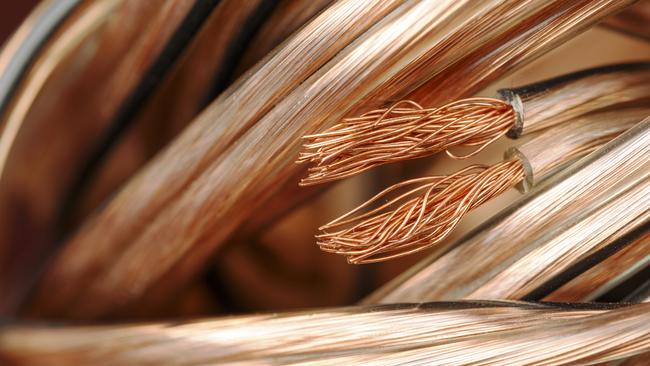
Australia is involved in an energy transformation project that will inevitably lift the cost of energy and boost inflation.
As I explained on Monday, the current upward cost momentum comes to the looming global shortage of copper and other minerals required in the electrification process.
Copper prices need to rise to justify extraction of the required minerals.
The now locked in mining project delays will create the shortages needed to trigger that metal price rise process and in turn further boost the cost of electrification and therefore the price of power.
Australia is erecting a vast network of costly solar and wind power generation facilities, and their owners require a return on capital. When governments erect them, they borrow money at interest rates that are escalating.
Leaving aside capital costs, the actual running costs of producing power from these renewable facilities is low, so when they are in full production the market is flooded with cheap power. But at night and in climate events when the wind slackens much less power is produced, usually, but not always, at times when demand is lower.
This production fluctuation process is a disaster for coal generation, which thrives on high, steady volumes of power production. Accordingly, demand fluctuations and the fact that the coal stations are being phased out, causes most of their owners to spend the very minimum amounts on maintenance.
As a result, coal power stations are becoming increasingly unreliable and subject to breakdowns.
In turn, this is forcing them out of existence faster than would otherwise be the case, thus limiting power generation capacity in the integrated systems.

These increasingly powerful forces combine to create electricity shortages and sky-high, short-term wholesale prices that push the overall industry and consumer price of power higher.
And in a year or two — depending on global economic activity — they are going to be joined by the repercussions of the accelerating price of copper and other electrification minerals caused by demand outpacing production, which will take too long to respond.
This is going to not only substantially increase the cost of our renewable generators but, because the generators are placed in remote areas, vast amounts of copper must be used to erect new transmission lines which are set to cost much more than current estimates. In turn, these extra costs must be passed onto consumers.
This approaching cost and copper shortage explosion is going to slow down the pace of renewables and will make the 2030, 2035 and 2050 targets Australia and other countries have set almost impossible to achieve.
If we were smart, and really wanted to achieve our renewable goals at a reasonable cost, then we would adopt policies that could achieve those goals at an affordable cost instead of our current policies which are oriented to politics rather than practicalities.
The solutions to achieving our climate goals require strategies that environmentalists regard as heretic, and many would prefer more carbon emissions than the adoption of such policies.
The most obvious strategy is to cut back our usage of copper in new transmission emission lines by erecting gas or nuclear-fired plants near the current coal power stations so that we can use our old transmission lines efficiently as part of a back-up to solar and wind.
Australia has some of the lowest cost, non-fracked gas deposits in the world, sitting alongside pipelines that go past existing transmission lines.
The best example is Victoria’s immense gas deposits (estimated by the best world reserve calculators) which Premier Dan Andrews refuses to develop. But there are opportunities to adopt the same strategy elsewhere n Australia, albeit more costly.
Unlike nuclear, gas power can be turned on and off quickly, so it can become an efficient back-up in times when renewable production is down. But we can also slash the requirements of the new transmission network by erecting thorium based nuclear style power stations for smaller communities.
They produce very little waste and occupy small amounts of space.
The alternative to the strategic use of gas and nuclear is to erect large back-up facilities for the times when renewable power is low.

The most obvious is via batteries, but it is high cost and uses vast amounts of copper.
The escalating costs and delays in the Snowy Hydro 2.0 scheme show the dangers in over ambitious hydro back up schemes.
In the case of Victorian gas, the fact that it is dissolved in water would help kick-start the removal of carbon from the air via carbon storage vegetation and better agricultural procedures.
If we embraced these strategies, our cities and towns would gain lower cost and reliable power and make our targets achievable.
We would then be able to be considered as a place to produce copper metal and reduce the world’s risk dependence on China, which currently dominates the refining and smelting of copper and other minerals.
Instead, from Canberra, we receive all sorts of statements about fictitious price reductions and gymnastics trying to restrict our gas exports to countries like Japan that need our abundant gas.
Australia is uniquely placed to lead the world in solar and wind energy generation, but we must do it in a way that limits our exposure to copper shortages, keeps the costs down and ensures supply reliability.







Large numbers of Australians are regularly hoodwinked into believing that we are headed for lower power prices via renewables, and so this month were shocked at the latest round of big power price increases. Sadly, there are a lot more to come.